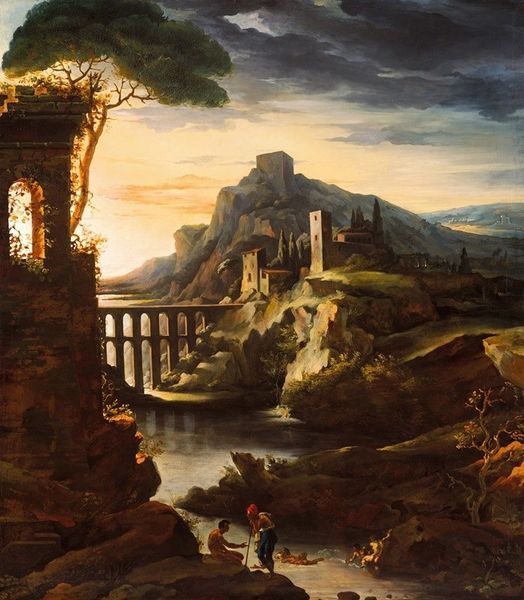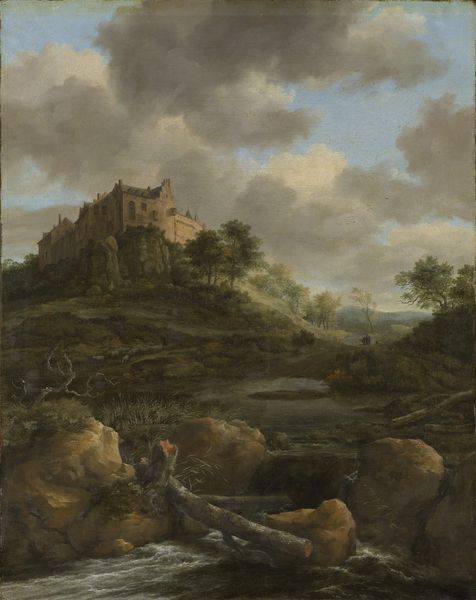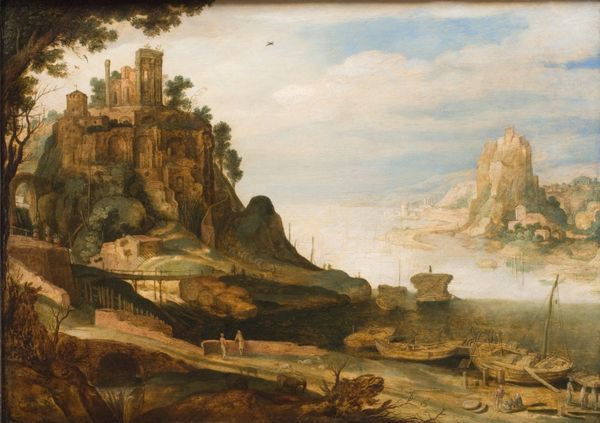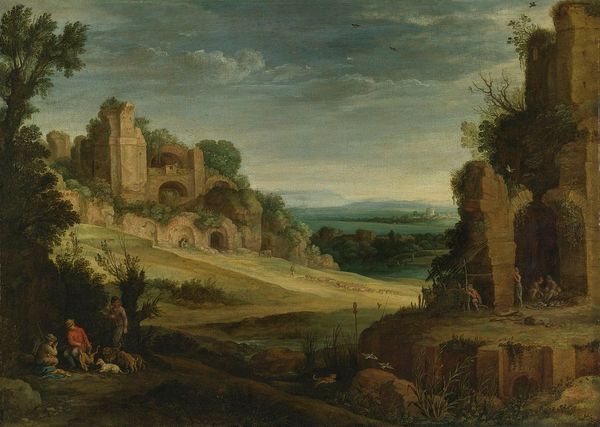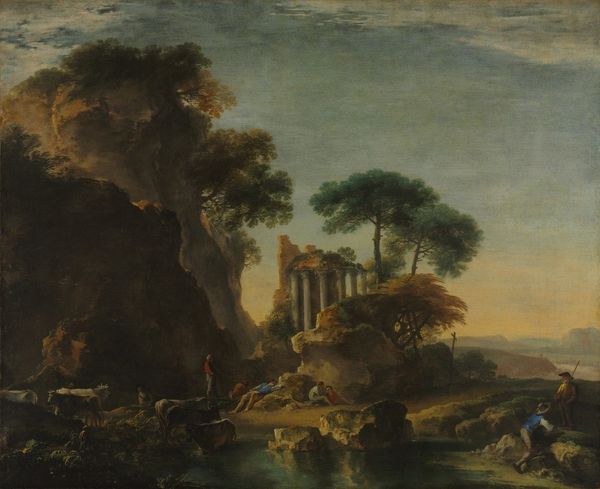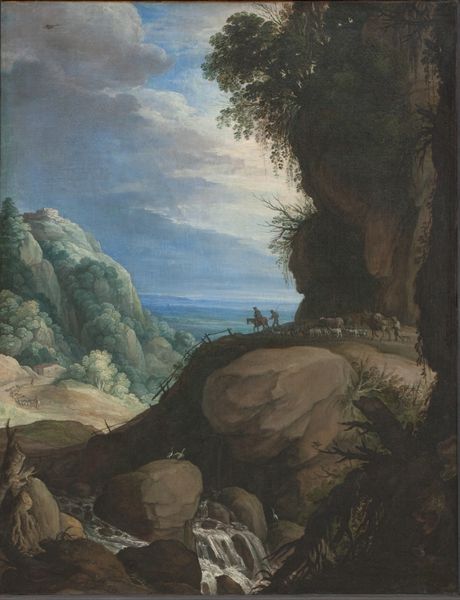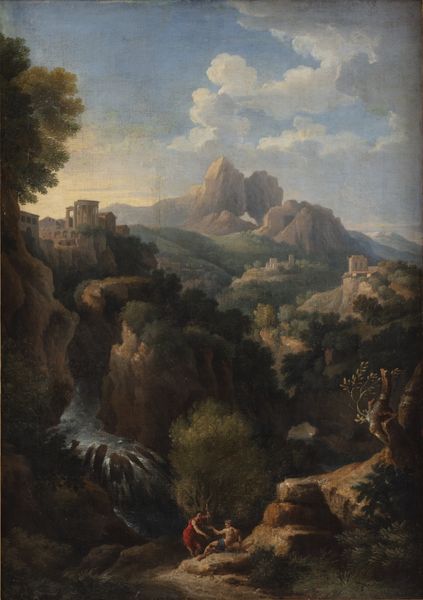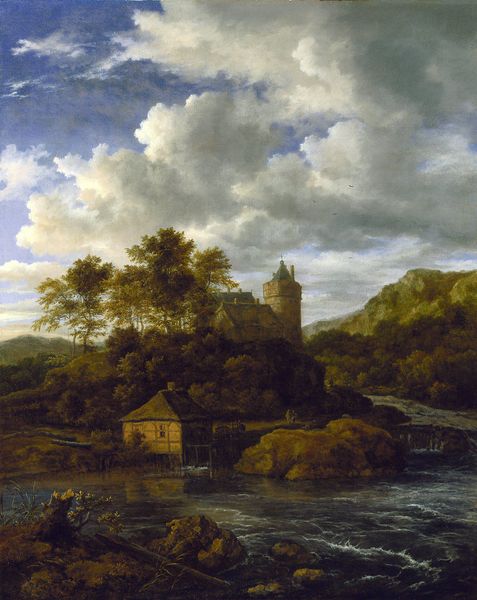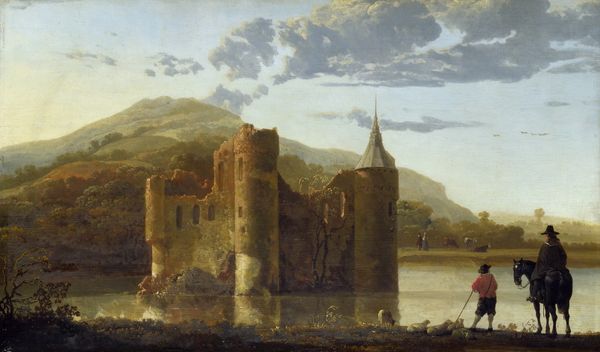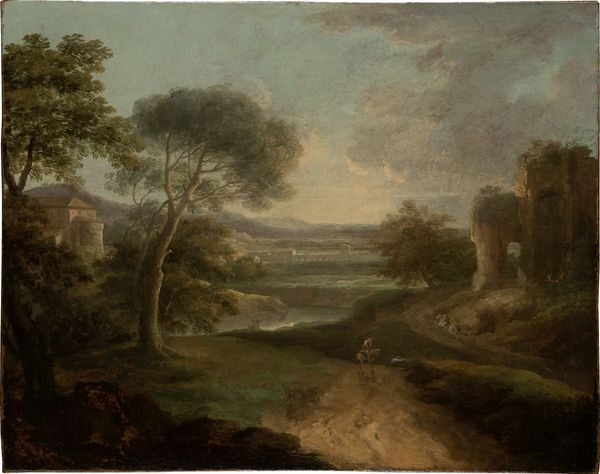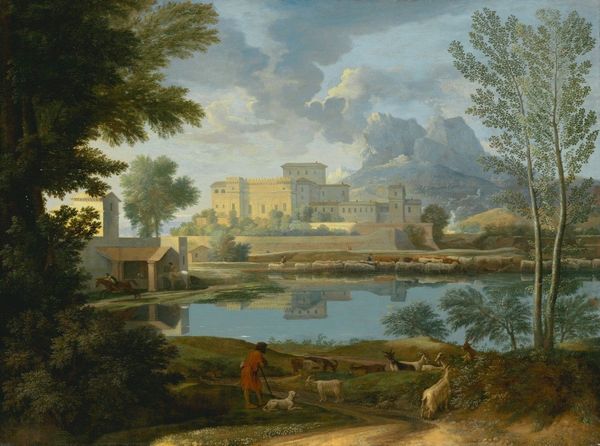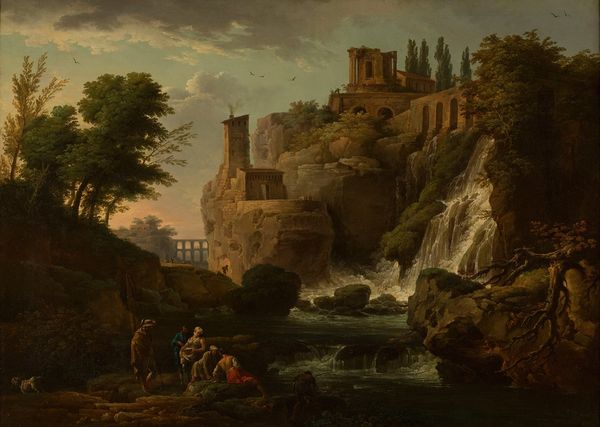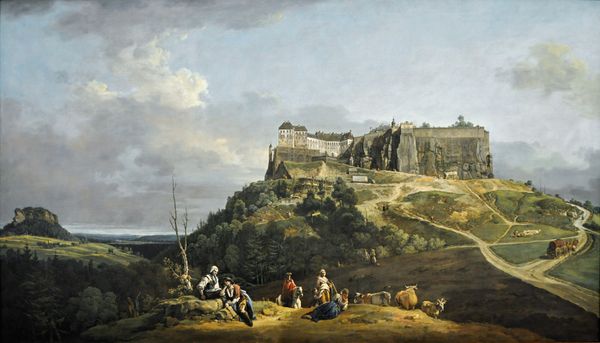
oil-paint
#
oil-paint
#
landscape
#
figuration
#
oil painting
#
romanticism
#
history-painting
Copyright: Public Domain: Artvee
Editor: This is Théodore Géricault's "Italian Landscape with a Tomb," painted in 1818. It's an oil painting, and it strikes me as quite dramatic and almost brooding. The light is so theatrical. What compositional elements do you notice in this work? Curator: Indeed, the composition is highly deliberate. Note the arrangement of light and shadow; Géricault masterfully utilizes chiaroscuro to guide the eye. Observe how the imposing tower and tomb structure anchor the composition, contrasting with the atmospheric distance. Editor: I see that, yes. It almost feels like the landscape is a stage, and the tomb is the main prop. Curator: Precisely. Consider also the placement of the figures; they are relegated to the lower register. The scale and detail with which they are depicted diminishes their prominence within the larger visual scheme, doesn't it? They almost serve to emphasize the imposing nature of the architecture and landscape itself. Editor: So, the figures are part of the scenery rather than the subject? I thought it was odd how small they are compared to everything else. Curator: The spatial relations, along with the distribution of pigment, function to create a deliberate hierarchy. Ask yourself: What effect is this meant to create for the viewer? The heaviness of the tower is definitely the most striking element in the painting. Editor: It’s almost like the ruins are a stand-in for something— perhaps mortality itself? Now I understand what he wanted to convey, especially within the landscape, thank you. Curator: A poignant interpretation. Examining how formal elements function in conveying the narrative can illuminate so much.
Comments
No comments
Be the first to comment and join the conversation on the ultimate creative platform.
